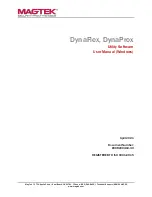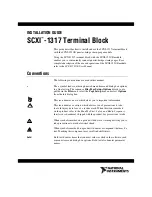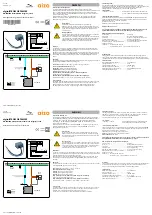
ETL600 1KHW001489-EN
ABB Switzerland Ltd
command. Transmitting two discrete frequencies gives added security
against speech and interference, e.g. an audio frequency generator.
Compared to single tone command signals, the multiplex dual tone
command signal has the same amplitude (peak envelope power), but
3 dB lower rms power since each tone is transmitted at a 6 dB lower
voltage level.
Amplitude
Frequency
F1 F2 F3 F4 F5 F6 F7 G
Speech Band
Frequency
Time
Guard signal
Trip
signal
Fig. 3-42
Dual-tone principle
In order to reduce the transmission time, the NSD600 tripping signals
are not relayed through the equalizer. The NSD600 receiver is
therefore designed that it is able to handle a wide range of magnitude
distortion within the speech band.
3.6.8.4.2. Trip
frequencies
The following seven preset frequencies given below are provided in
the PLC speech frequency band (0.3 … 2.0 kHz).
Trip signal frequencies
F1 = 356 Hz
F2 = 598 Hz
F3 = 841 Hz
F4 = 1083 Hz
F5 = 1325 Hz
F6 = 1568 Hz
F7 = 1810 Hz
With seven frequencies 21 dual tone tripping signals can be achieved.
16 of them are used by the NSD600 to transmit its four independent
commands and their combinations plus a test signal.
The nominal tripping signal level with minimal boosting (0…6 dB) has
the same value as the test signal level, it is 0 dBm0 or equal to the
guard level (whatever is higher).
Structure and Function
November 2005
3-75
Summary of Contents for ETL600
Page 4: ......
Page 32: ......
Page 126: ......
Page 176: ......
Page 206: ......
Page 216: ......
Page 226: ......
Page 264: ......
Page 268: ......
Page 276: ......
Page 284: ......
Page 308: ......
Page 324: ......
Page 346: ......
Page 348: ......
Page 366: ......
Page 372: ......
Page 374: ......
Page 380: ......
















































